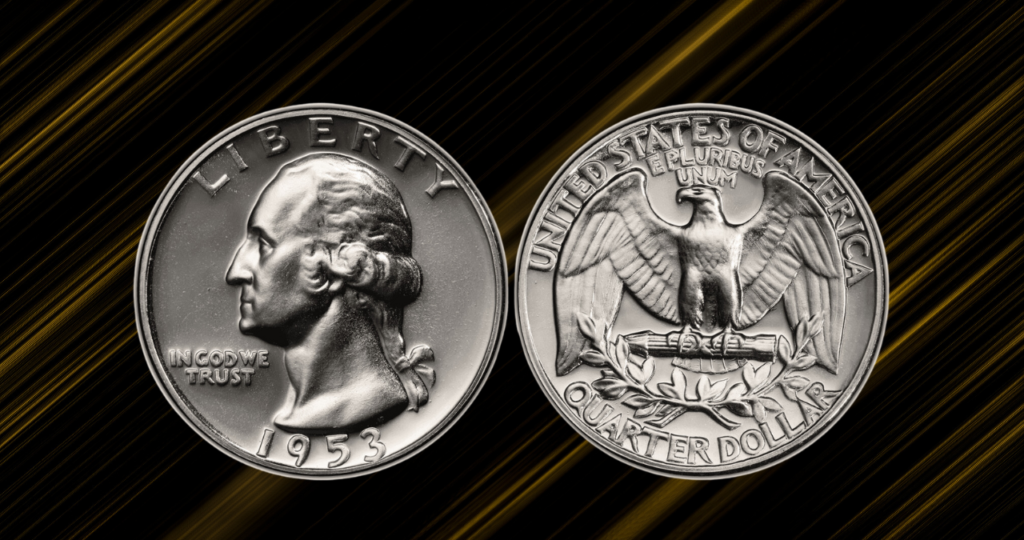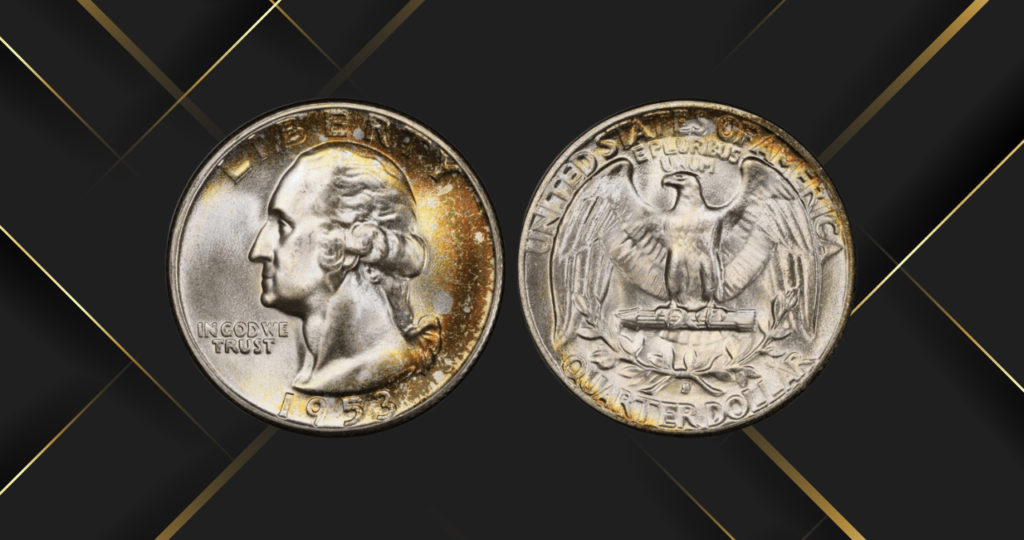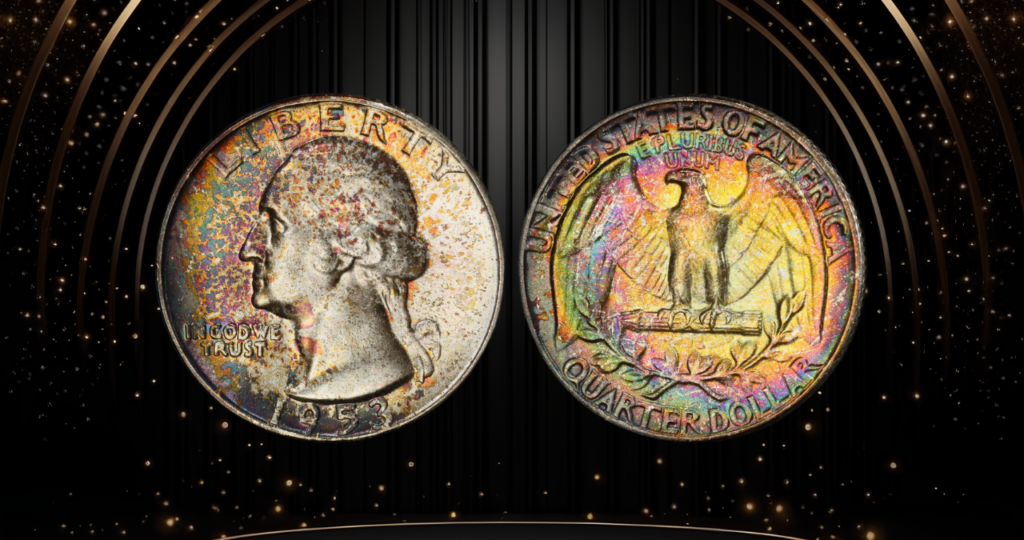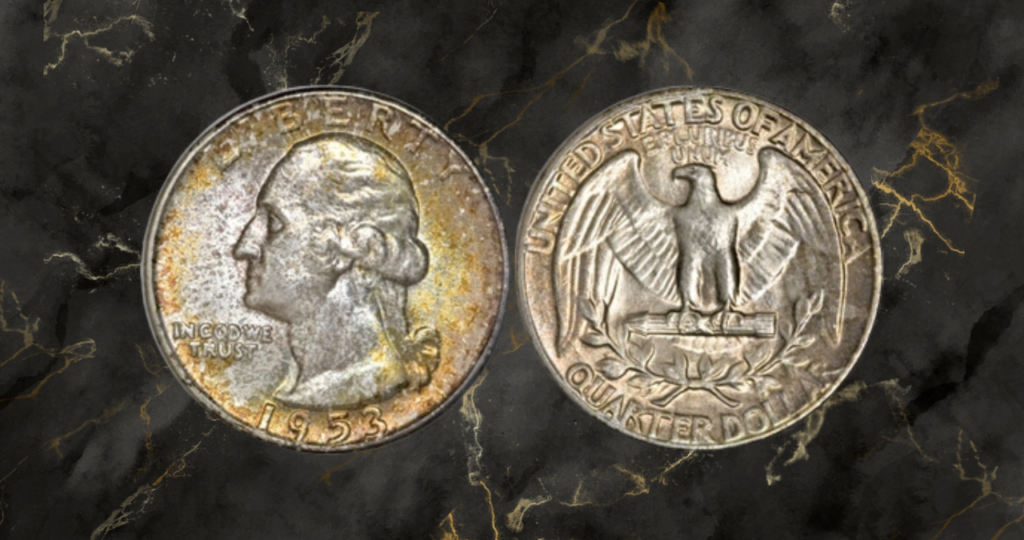The 1953 Washington Quarter is a coin with a rich history and notable significance for collectors. Despite its age of over 70 years, the value of the 1953 quarter remains significant for coin enthusiasts, whether you’re looking to buy or sell. This guide explores the history, composition, varieties, and current value of the 1953 Washington quarter, simplifying the details for better understanding.
What is the 1953 Washington Quarter Made Of?
The 1953 Washington quarter is composed of 90% silver and 10% copper. Its silver fineness stands at 0.9, with an actual silver weight of 0.1808 oz. This gives the coin a weight of 6.25 grams, a diameter of 24.3 millimeters, and a reeded edge.
Initially, the Washington quarter was intended as a commemorative coin to honor the 200th anniversary of George Washington’s birth in 1932. However, due to its immense popularity, it became the standard design for quarters starting in 1934, and the design remains in use today.
How 6 Rare Coins From the 1800s Could Bring You a Fortune!
Design of the 1953 Washington Quarter

On the obverse (front) of the 1953 quarter, you’ll find the profile of George Washington, the first President of the United States. The inscriptions include:
- LIBERTY – representing the nation’s key principle
- IN GOD WE TRUST – the official motto of the U.S.
- 1953 – the year the coin was minted
On the reverse (back), the quarter showcases an eagle with a bundle of arrows, symbolizing the strength and preparedness of the U.S., along with an olive branch representing peace. The inscriptions here include:
- UNITED STATES OF AMERICA
- E PLURIBUS UNUM – Latin for “Out of many, one,” emphasizing unity
- Quarter Dollar – representing the coin’s denomination
The design was originally suggested by Laura Gardin Fraser, but John Flanagan’s design was eventually selected by Treasury Secretary Andrew Mellon, a choice that has since become iconic.
Varieties of the 1953 Washington Quarter

The 1953 Washington quarter was minted in three locations: Denver, Philadelphia, and San Francisco, resulting in slight variations based on their mint marks. Over 88 million quarters were produced that year, and here’s a closer look at the varieties:
| Variety | Mint Location | Mintage |
|---|---|---|
| 1953 D | Denver | 56,112,400 |
| 1953 S | San Francisco | 14,016,000 |
| 1953 P | Philadelphia | 18,536,120 |
| Proof | Philadelphia | 128,800 |
Denver (1953 D Washington Quarter):
The Denver Mint produced the largest quantity, with over 56 million coins. Despite their large number, finding 1953 D quarters in top condition is challenging. In circulated condition, they are typically valued between $4.45 and $7.
San Francisco (1953 S Washington Quarter):
With just over 14 million minted, the 1953 S quarters are often found in higher grades. Their value also ranges from $4.45 to $7 for circulated coins.
Philadelphia (1953 P Washington Quarter):
The Philadelphia Mint produced over 18 million quarters. However, due to the use of worn dies, these coins often lack detail, making high-grade examples rare and valuable.
Proof Coins:
Philadelphia also minted proof versions of the 1953 quarter, primarily for collectors. These coins are valued higher due to their superior detail and lower production numbers, with prices starting around $13 for uncirculated conditions.
8 Rare Coins You Might Have Without Knowing Their True Value
Common Errors in the 1953 Washington Quarter
Coin errors add an intriguing dimension to the value of the 1953 Washington quarter. Collectors often seek out these rarities, which can increase a coin’s worth. Here are some common errors to look for:
- Repunched Mint Mark (RPM): Occurs when the mint mark is punched twice at different angles, leading to a doubled or blurry mark. These are commonly found on Denver and San Francisco mint coins.
- Clipped Planchet: This error happens during the cutting process, where a portion of the coin’s blank overlaps another, resulting in a clipped appearance.
- Doubled Die: This happens when the die strikes the coin twice, creating a doubled effect on the coin’s design.
Error coins, especially those with clear doubling or significant mint mark anomalies, can fetch much higher prices in auctions.
Value of the 1953 Washington Quarter Today

The 1953 quarter’s face value is 25 cents, but its silver content gives it a higher melt value of approximately $3.97 (subject to the current price of silver). However, most quarters in circulated condition will sell for between $4.45 and $7. For those in uncirculated or higher grades, the value can increase significantly.
Auction Highlights:
- A 1953 Proof Washington quarter (PR69) sold for $15,600 in 2001.
- A 1953 S Washington quarter (MS68) fetched $5,040 in 2023.
- A 1953 D Washington quarter (MS67) sold for $4,744 in 2008.
- A 1953 P Washington quarter (MS68) sold for $4,500 in 2018.
Quarters in top condition or with rare errors tend to attract the highest bids at auctions.
How the 1953 Washington Quarter is Graded
Coins are graded using the Sheldon Scale, which ranges from 1 to 70, with 70 being perfect condition. Common grades include:
- G-4 (Good): Worn, but all design details are visible.
- F-12 (Fine): More defined details but still shows wear.
- EF-40 (Extremely Fine): Light wear with most details intact.
- AU-50 (About Uncirculated): Minimal wear, good eye appeal.
- MS-60 to MS-70 (Mint State): No wear, with varying degrees of contact marks and luster.
Coins that score higher on this scale are significantly more valuable.
Where to Buy or Sell 1953 Washington Quarters

You can buy or sell 1953 Washington quarters through various platforms, including:
- Online marketplaces: eBay, Amazon, and Etsy offer a range of 1953 Washington quarters at different price points.
- Local coin shops: Visit local coin dealers or antique shops.
- Auction houses: Heritage Auctions and other auction platforms often feature high-grade or error coins.
Is Your 1994 Nickel Special? Here’s How to Spot Rare, Valuable Coins!
Conclusion
The 1953 Washington quarter is more than just a piece of U.S. history—it’s a valuable collector’s item. Whether you’re searching for a circulated coin or a rare error variety, understanding its background and current value is essential for both buyers and sellers.

